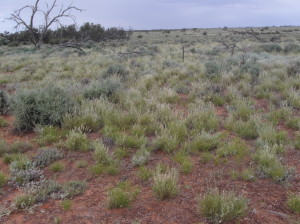How do you view the needs and wants of land & livestock?
Most people have good knowledge of the needs and wants of themselves or their families, even their communities, how many of you understand the needs and wants of the land and livestock. With both the land and livestock unable to talk, some may see this as being very difficult, it is certainly open to different interpretations, so this is my interpretation of the need and wants of land and livestock and how we can cater for the needs. To define the difference between needs & wants, I see the wants as just “white noise”, the needs are not negotiable, same as with people.
So the way I see the needs of each group:
Land: The land needs a broad diversity of plant species and ages so that is has resilience to deal with diseases, natural disasters etc. With lots of different plant species the right plants can fulfil their role in the landscape, i.e. plants that can colonise bare areas, naturally ripping the soil so other grasses can follow in succession. E.g. thistles and other plants normally referred to as “weeds”.
The plants also need to be in the right “order”, by that I mean plenty of coarse vegetation (trees & shrubs) on the ridges and predominately grasses down the slopes, this allows for infiltration of water and nutrients that gravity takes down the slope. The land also requires disturbance, the drier the land (brittle) the more dependant it is on disturbance in order for reseeding and natural succession. The plants too require pruning if they are to have longevity in the landscape, the same as in any garden. This is an area we have to try and balance as sometimes the plants are saying “eat me”, when the best thing might be to leave them and wait for the next succession of better plants. By encouraging many different plant species and lots of “untidy” litter on the ground you create a wonderful harbour for many species of insects, birds and animals, all which can help you manage the landscape.
Livestock: The basic needs of animals is access to a “full pantry” of foods and medicines naturally available in a diversity of plants, also good quality water, not too far away. The livestock have many wants, like wanting to be safe and settled in one area through lambing/calving, or even wanting to stay in that one area as their “territory” for their whole life. While delivering on these wants results in higher production it also can impinge on the needs of the land, which as I said are not negotiable.
Identifying the needs can be very easy, managing and balancing those needs with the needs of your family & business can be much more difficult, so again this is how we see it:
Management of these needs: This is the area that can be difficult because it certainly can be hard as we only get paid for our produce (meat or wool) so by looking after the livestock better our income increases, or does it? By placing a nominal value on the needs of the landscape, we use $8/ha/yr (based on our increasing carrying capacity) you can very quickly establish that by fulfilling the wants of the livestock at the cost of the needs of the landscape, any extra income is more than eaten up in reduced land capability.
If society valued the landscape as well as the produce, rather than us having to use nominal figures the answer would be much easier. That is just one of the many complexities farmers have to come to terms with learning the “art of farming”.

